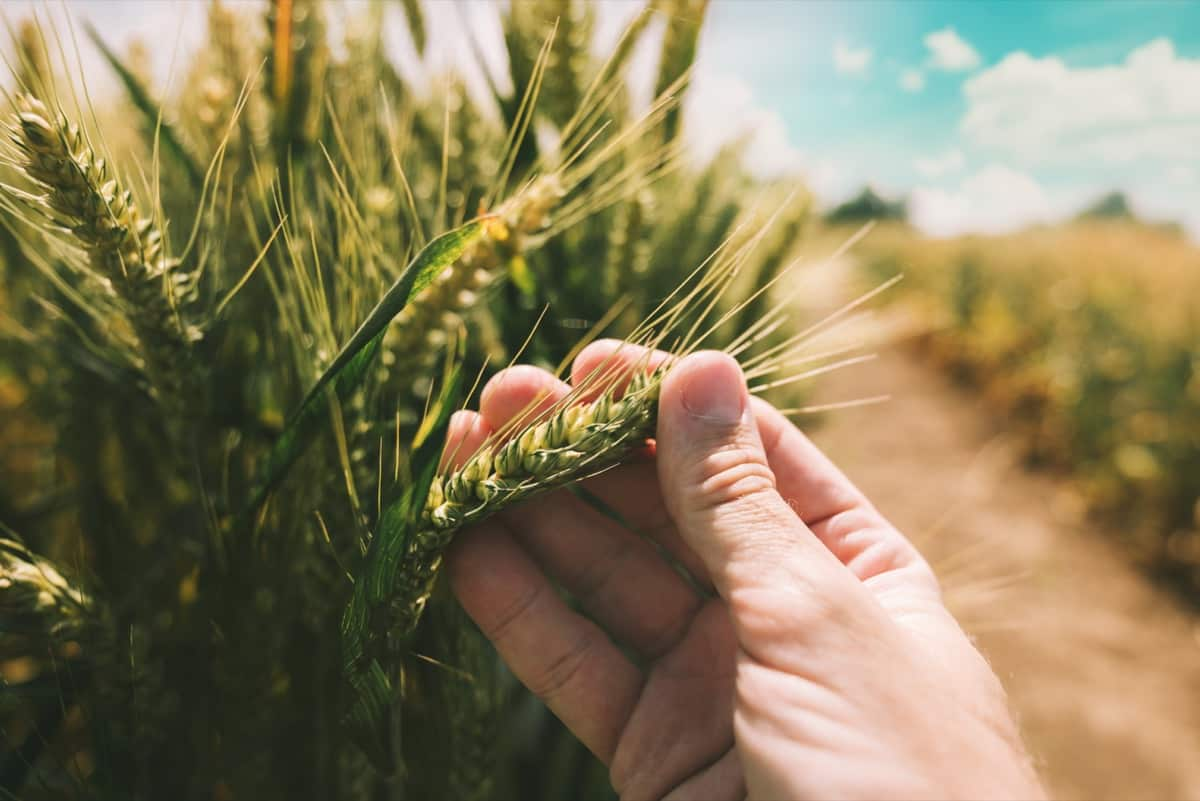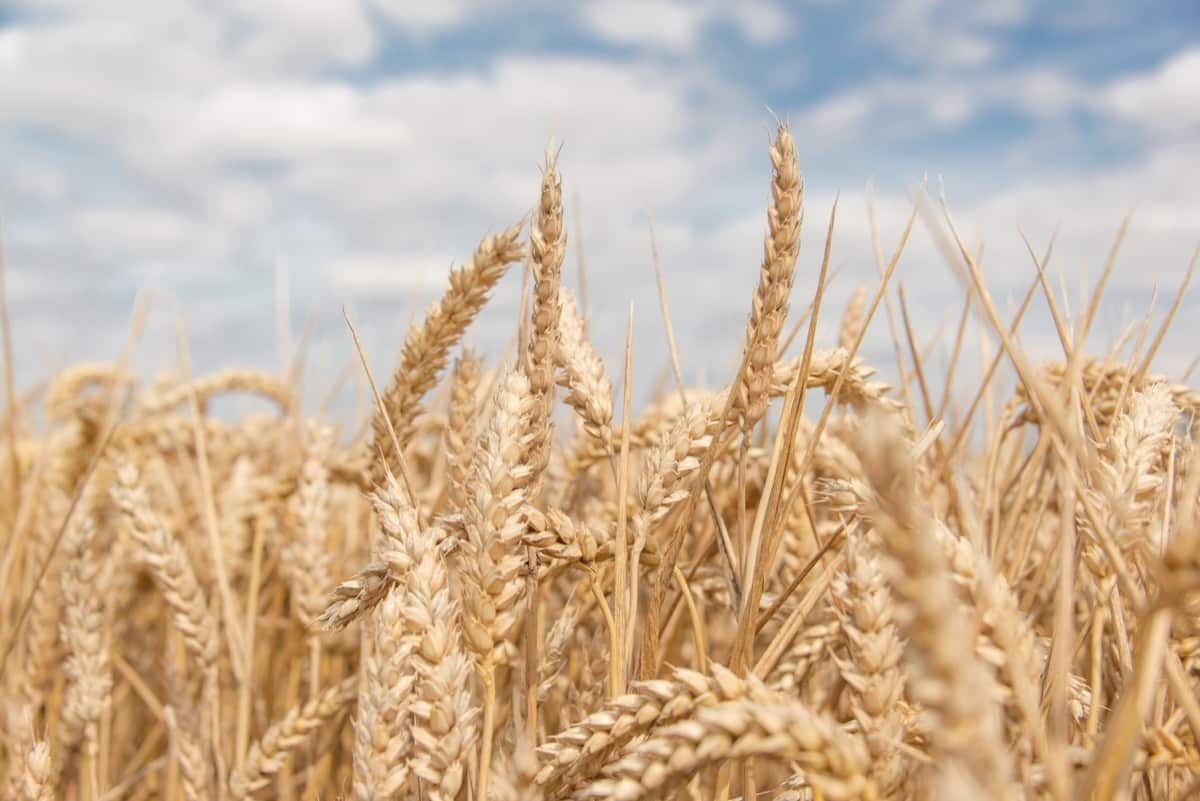Wheat Molya Nematode, Heterodera avenae, belonging to the Family Heteroderidae of the Order Tylenchida, lives their unfavorable phase in the form of a cyst; hence they are also known as Wheat Cyst Nematode. It is a type of roundworm found in the soil and feeds off the roots of wheat plants.

The wheat molya nematode is a microscopic worm that can cause significant damage to wheat crops, reducing yields and ultimately leading to crop failure if not prevented or controlled. The pest has many hosts, including cereals and other grasses, and has been found in most wheat-producing countries. The pest is difficult to detect and diagnose and has a high reproductive rate, making it difficult to contain.
To effectively manage this pest, it is important to understand its life cycle, its preferred habitats, and the best methods for controlling it. This article will provide an overview and discussion of the Molya Nematode Pest in wheat crops, including its symptoms, identification techniques, and control.
Wheat Molya Nematode Pest Management in Wheat
Life Cycle of Molya Nematode Pest in Wheat Crop
The life cycle of the wheat molya nematode pest in wheat crops is complex. This pest commonly has four stages in its life cycle, they are egg, juvenile, adult, and egg-laying stages. The first stage is the egg stage. The eggs of the wheat molya nematode pest are laid in the soil, typically near the base of the wheat plant, in a cyst, along with a dead adult female body, during unfavorable conditions.
The second stage is the juvenile stage. In this stage, the eggs will be released into the soil, hatch into juvenile nematodes, and undergo metamorphosis and molt four times before becoming an adult. They will parasitize on the roots of the wheat plant and causes damage to the root system, and reduce the crop yield. The third stage of the life cycle is the adult stage.
They will feed on the roots and leaves of the wheat plant, causing further damage to the crop. The fourth stage is the egg-laying stage. The adult nematodes will lay eggs in the soil near the base of the wheat plant. The eggs will then hatch into juvenile nematodes and start the cycle again. Depending on the environmental conditions, the wheat molya nematode pest’s life cycle can take two to four weeks.
Occurrence of Molya Nematode Pest in Wheatfield
- Location of Wheat Molya Nematode: The wheat molya nematode pest has been found to infest wheat crops in countries worldwide, including the United States, India, China, Pakistan, Egypt, Iran, Russia, and Turkey. In India, the pest infects the wheat crops in Haryana, Punjab, Rajasthan, and Uttar Pradesh.
- Host Range: The molya nematode can infect different crops, including wheat, barley, oats, rye, triticale, and grasses.
Factors Favoring Population Increase of Molya Nematode Pest in Wheatfield
- Climate – Warm and humid conditions favor developing Molya nematode populations. High temperatures and high humidity are favorable conditions for the nematodes to feed, reproduce, and thrive in. In addition, free moisture in the soil creates an ideal environment for them to survive.
- Crop residues – Crop residues, such as wheat straw, provide a favorable habitat for Molya nematodes to reproduce and spread. In addition, crop residues also provide food for the pests, allowing them to sustain their population.
- Chemical pesticides – Certain chemicals, such as carbamate, are toxic to beneficial soil organisms that help control nematode populations.
- High reproductive rate – The Molya nematode can reproduce parthenogenetically, which means it can reproduce without the need for males. Molya nematode has a long lifecycle and can survive in the soil in a dormant state for up to two years.
Identification of Molya Nematode Pest in Wheatfield
- Egg: The eggs are small, about 0.3mm in diameter, and oval. They are usually found in clusters of up to 50 eggs.
- Larva: The juvenile nematodes are about 1mm long and have a distinctive curved body shape.
- Adult: The adult nematodes are about 2mm long and have a more elongated body shape.
In case you missed it: Wheat Termites Pest Management in Wheat: Symptoms, Treatment, Chemical, Biological, Natural, and Organic Control

Damage Symptoms of Molya Nematode Pest in Wheatfield
- The primary symptom of Molya nematode infestation is the wilting and yellowing of leaves and the eventual death of the plants.
- The infested wheat plants will show stunted growth and a shriveled and unhealthy appearance.
- The nematode presence in the soil will cause the plants to produce highly branched rootlets, and the main root remains stunted and bears small galls.
- In severe infestation cases, the seedlings will fail to germinate and establish as a plant.
- The plants that escape the infestation in their early stages will soon be infested and produce shorter ears and stalks, resulting in a poor yield.
Percentage of Yield Lose in Wheat due to Molya Nematode Pest
Molya nematode is considered to be one of the most destructive pests of the wheat crop, which is estimated to be responsible for a yield loss of 8-10 percent globally. This pest can cause up to 25 percent yield losses in some parts of the world. In the United States, the Molya nematode has been estimated to cause an average yield loss of 3-5 percent for wheat crops.
However, in some areas, a much higher loss of yield of up to 10-20 percent can occur. In Canada, the average yield loss due to Molya nematode is estimated to be around 6-8 percent. The estimated yield losses in Europe are around 8-10 percent, whereas the yield losses in Asia, Africa, and Australia, are around 5-7 percent.
Cultural Control of Molya Nematode Pest in Wheatfield
- Crop rotation – This involves alternating the wheat crop with other non-host crops such as corn, sorghum, maize, sunflower, soybean, mustard, pulses, fenugreek, or carrot for one or two years.
- Tillage – Ploughing two to three times during summer helps disrupt their habitat by reducing the amount of organic matter available in the soil, making it more difficult for the nematodes to survive.
- Sanitation – Burn or bury the crop residues in the field to control the pest population.
- Resistant varieties – Employ cyst nematode-resistant wheat Raj MR-1 or barley RD 2035 or RD 2052.
Biological Control of Molya Nematode Pest in Wheatfield
“Predatory nematodes feed on the molya nematode pest, killing them and reducing the damage they cause. A technique known as”“micro-inoculation” is used to release predatory nematodes into wheat fields. This technique mixes a small amount of nematode-infested soil with the wheat field soil. “Predatory nematodes feed on the molya nematode pest, killing them and reducing the damage they cause. A technique known as “micro-inoculation” is used to release predatory nematodes into wheat fields.
This technique mixes a small amount of nematode-infested soil with the wheat field soil. The predatory nematodes feed on the molya nematode pest, controlling their population. Parasitic wasps lay their eggs inside the molya nematode pest, killing them and reducing their population. Fungi such as Beauveria bassiana and Metarrhizium anisopliae can also be used to attack the pest, decreasing their population.
Chemical Control of Molya Nematode Pest in Wheatfield
Soil fumigants are chemical compounds that produce toxic gases when applied to the soil, which kills the nematodes. Some commonly used fumigants include methyl bromide, chloropicrin, and dazomet. These fumigants are applied just before sowing the wheat crop to ensure the soil is nematode-free.
In case you missed it: Wheat Ghujhia Weevil Management in Wheat: Symptoms, Treatment, Chemical, Biological, Natural, and Organic Control

Nematicides are chemicals that specifically target nematodes and kill them on contact. These chemicals are usually applied to the soil before and after planting the wheat crop. Some commonly used nematicides like 1,3-dichloro propene, carbofuran, aldicarb, and oxamyl can be applied at 40-45 kg per hectare.
Preventive Measures for Control of Molya Nematode Pest in Wheatfield
- Deep plowing and cultivating the soil helps to bury the Molya nematode eggs and reduce the number of nematodes in the field.
- Soil solarization involves covering the soil with a plastic sheet and exposing it to direct sunlight for several weeks. This helps to reduce Molya nematode populations by killing the nematodes through heat stress.
- Using soil amendments such as organic matter and compost can help reduce Molya nematode populations by providing a favorable environment for beneficial organisms.
Conclusion
The wheat molya nematode pest is one of the most important and destructive pests of wheat crops in India. This is a major pest of wheat in India, with losses ranging up to 50% in some cases. This pest feeds on the roots of wheat plants and is responsible for causing stunted growth, reduced plant vigor, and reduced yields. Control of this pest is essential for protecting wheat crops and ensuring a good harvest.
Various methods are used to control this pest, such as crop rotation, soil solarization, resistant varieties, cultural practices, and chemical treatments. These methods must be implemented promptly to be effective. Moreover, research into new and improved control methods should be continued to ensure effective control of this important pest.
- Beneficial Insects in Pest Management
- Natural Solutions for Pest Control in Flower Gardens
- Types of Fungicides Used in Agriculture
- Common Issues in the Fruit Development Stage of Pomegranate Farming
- Fruit Development Issues in Papaya: Easy Solutions and Treatment
- Soil-Borne Diseases and How to Protect Your Plants
- Practices to Prevent Disease Spread in the Garden
- From Wilted to Thriving: How to Treat Root Rot Naturally in Houseplants
- Natural Remedies to Cure Brown Spots on Fig Tree Leaves